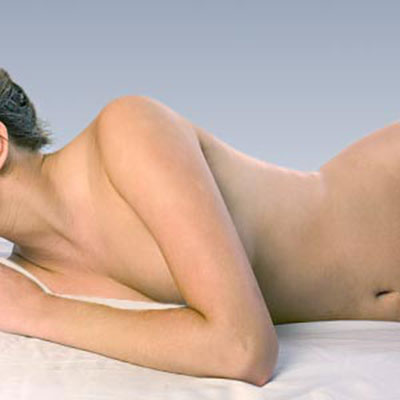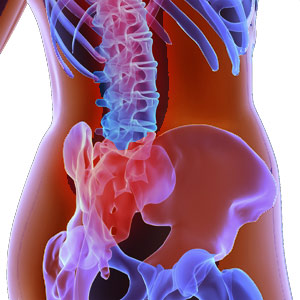Sexual Dysfunction in Women

She is a woman who acknowledges the importance of sex in life. She knows that engaging in sex is a way to express her love, to share physical pleasure, to feel emotionally bonded with her partner and a gift to delight her partner. All along she is aware that engaging in sex improves her own well-being. Sex benefits her skin, her hair shines, and estrogen levels double, stress is eliminated and overall her physical, mental and emotional health is benefited.
Of late she is exhibiting signs of disinterest. She feels sex desire is waning. Even when she engages in sex, she is unable to enjoy or derive complete sexual satisfaction. The change is becoming persistent and is causing distress. This is referred to as - sexual dysfunction in women or female sexual dysfunction (FSD). Can a woman overcome female sexual dysfunction? Very much, she can indeed reclaim her sex life.
Woman's sexual response Cycle A woman's body goes through a series of reactions before, during and after sex. This is referred to as sexual response cycle. Understanding sexual response cycle is pertinent so as to gain insight into how a woman's body and senses work during the process. A woman's sexual response cycle consists of five main stages. It involves both mental and physical responses during sex.
Desire or libido: The first stage is more related to the mind than to the body. It begins with the 'desire' or 'want' to have sex - a reaction to stimuli such as sight, sound, smell, touch, taste, movement, fantasy and memory.
Excitement or arousal: The stage, which involves the physical response. The body responds to feelings of desire. Most notable physical responses are as follows and the key signal is vaginal lubrication.
- Heart rate and blood pressure increase.
- Increase in breast size and nipples turn erect.
- Genital and pelvic blood vessels turn engorged.
- Lengthening and widening of vagina.
- Swelling and enlargement of clitoris.
- Swelling and separation of labia.
- Lubrication of vagina.
Plateau: The highest point of sexual excitement. If mental and/or physical stimulation (arousal) continues, the most noticeable changes will be:
- Increase in heart rate, breathing rate and blood pressure.
- Deep sexual flush.
- Sensual feeling of impending orgasm.
- Withdrawal of the clitoris.
- Bartholin glands mucus secretion.
- Continuing swelling of the labia.
- Development of 'orgasmic platform'
Orgasm: The peak of plateau stage and the concluding stage of sexual response cycle. The muscles contract in the outer part of the vagina and heightened sexual tension is released in the form of orgasm. Continued orgasms in a row are referred to as multiple orgasms. Noticeable changes include:
- Continued rise in heart rate, breathing and blood pressure
- Contraction of the uterus, vagina, anus and muscles of the pelvic floor.
Resolution: Though not accounted for in the female sexual response cycle, it refers to the period during which the body returns to the pre excitement or plateau stage. Almost all the changes in body regain original position or normal size and shape. The whole body is at a point of relaxation. Feeling of contentment and wanting to sleep are also very common. It is only the cervix, which opens up to let semen travel into the uterus.
Sexual dysfunction in women There are instances wherein couples with years of successful sex life suddenly face a strain in relationship. Deep considerations of the possible factors may reflect presence of sexual dysfunction disorders. According to American Foundation for Urologic Disease, Female sexual dysfunction can be classified into one of the four disorders, only if its presence causes personal distress. If the problem is persistent and cause personal distress, a woman is considered to be facing female sexual dysfunction.
Recurring or persistent problem faced by a woman in one or all the stages of sexual response cycle that prevents a healthy and pleasurable sex experience is referred to as female sexual dysfunction. Four out of every ten women have female sexual dysfunction. Mostly, a kind of dysfunction at one stage of sexual cycle is connected to dysfunction at another.
Also termed as sexual dysfunction disorders, it is classified into 4 categories: sexual desire disorders, sexual arousal disorders, orgasm disorders, and sexual pain disorder.
Desire disorder/decreased libido The woman lacks interest in sex or lacks the desire for sex. This stage is an impediment and stops the sexual response cycle from gaining momentum. Inhibited sexual desire disorder, hypoactive sexual desire disorder or sexual aversion disorder- these are the three types of desire disorder.
Inhibited sexual desire disorder: Lack of interest interferes with the initiation of sex. She may not initiate, seek or respond to stimulations.
Hypoactive sexual desire disorder: Persistent or recurring lack of desire or an absence of sexual fantasies, this disorder is the most common desire disorder in women.
Sexual aversion disorder: An aversion or objections to having the genitals touched.
Symptoms:Lack of interest in sex
Causes: The causes are varied. It can be either a single or combination of factors such as changes in body, age related issues, impact of strained relationship, stress filled life with very little time for privacy, impact of previous sexual experience, psychological condition or the state of mind, environment etc.
- Decrease in normal production of estrogen
- Sexual abuse or incest.
- Influence of age
- Fatigue
- Pregnancy
- Strained relationship
- Physical illness
- Effects of medications.
- Any psychological condition
- Views and attitude towards sex.
- Improper sex techniques.
- Effects of childhood sexual abuse
Treatment: Empowerment on the subject through books, booklets or through the Internet in order to gain insight on how a woman's body works plays a vital role in recognizing, understanding and accepting the issue. The woman need to breakaway from the continuous anxiety and discuss with the partner. Subsequently, seek professional help, preferably a gynecologist. A medical evaluation may be suggested in order to check the testosterone levels. The therapist after detailed analysis decides on the course of treatment. A combination of treatment may also be adopted.
- If the decrease in desire is due to an age related issue such as vaginal dryness, a combination of hormones estrogen and testosterone will prove effective.
- If the causes are psychological, the therapist will adopt ways to tackle specific issues.
- Psychotherapy will be adopted in cases where the underlying problem is related to past memories.
- For those who are highly stressed, relaxation techniques can help.
- Kegel exercises to help strengthen vaginal muscles will be recommended.
- Marital therapist counsel partners about the importance of spending quality time together so as to boost a healthy and satisfying
sexual relationship.
Arousal disorders: At this stage, the woman with desire for sex lacks sexual response in her body even after sexual stimulation. She has no swelling of the external genitalia and absence of vaginal lubrication. The absence of lubrication causes pain during intercourse. She may abstain from sexual contact. Only if the problem mars interpersonal relationship it is considered as a disorder.
Symptoms:
- Inadequate lubrication, swelling of external
genitalia, a persistent and a recurrent problem.
- The issue mars relationship.
- The cause is not due to any other mental disorder or the after effect of consumption of drugs, medications or health condition.
Causes: The exact reason to achieve or maintain lubrication is still unknown. However, it is confirmed that lack of lubrication is not due to failure to be aroused. Reasons can be one or a combination of the following:
- Due to illness
- Lactation
- Other health condition
- Lack of hormone estrogen
- Side effects of medications
- Effects of surgery
- Side effect of radiation therapy
- Psychological causes
- Mental health disorders
- Damage to blood vessels of pelvic region
- Damage to nerves in pelvic area.
Treatment: When the problem persists and the woman recognizes its impact on relationship, it is best to take help. Discuss with partner and decide to meet gynecologist. The gynecologist is likely to discuss with the woman's family doctor as well as a psychotherapist. After assessing intake of medications, a physical examination will be conducted. Treatment varies depending on the exact cause.
- Hormone replacement therapy (HRT) is recommended for those who face difficulties with lubrication that is purely age related.
- Non-prescription medications available at pharmacies to improve lubrication are also an option.
- A small vacuum pump, a medical device approved by United States Food and Drug Administration to stimulate blood flow in the
clitoral area may also be suggested.
- To deal with psychological aspects, psychotherapy or talk therapy continues to be effective.
- Sex therapists provide help to tackle problems amongst couples concerning sexual difficulties.
Orgasmic disorder: The woman is sexually aroused and lubrication also occurs. Her body tension builds up but unlike earlier times when she naturally found it easier to reach orgasm she is unable to or finds it extremely difficult to reach the climax and release the tension. It is a stage that is marked by an inability to have an orgasm (absence) or delay in having orgasm despite long and intense sexual stimulation. For the disorder to be labeled as female sexual dysfunction, the condition ought to be persistent and a recurring problem, and a combination of physiological and psychological difficulties leading to personal distress in relationship.
Female orgasmic disorder can be either primary or secondary in nature. If the woman has never achieved an orgasm in any type of stimulation such as self-stimulation or masturbation, direct stimulation of the clitoris by partner or vaginal intercourse, it is considered to be primary in nature. However, if the woman who has earlier achieved orgasm but is incapacitated post illness, emotional trauma, post surgery or due to intake of medications, it is secondary in nature.
Symptoms: Besides inability to reach climax during sexual activity, other symptoms include lack of vaginal lubrication, lack of sexual interest or sexual aversion or painful sexual intercourse.
Causes: The reason can be psychological factors or a combination of physiological and psychological factors.
Physiological:
- The blood vessel of the pelvic region is damaged - pelvic floor prolapse.
- The nerves in the pelvic area are damaged.
- Due to intake of medications
- Due to removal of clitoris
- Unsatisfactory/inadequate genital stimulation
- Illicit substance abuse.
Psychological:
- Memories about present/past traumatic sexual
experience - sexual abuse, incest
- Emotional trauma.
- Lack of communication between partners regarding sex preferences.
- Emotionally strained relationship with partner.
- Unsatisfactory life.
- Inadequate or unsatisfactory foreplay
- Stress and fatigue
- Sex performance anxiety.
- Financial problems.
- Fear of loss of job
- Tight parenting schedules.
- Outlook/attitude towards sex.
- Mental disorders.
- Fear of pregnancy.
Treatment: At this stage, a woman is most likely to feel frustrated. A plethora of emotions can set in - low self-esteem, dejection, anger, frustration, disappointment etc. A woman can successfully take control of the situation by acquiring knowledge on the subject. That includes recognizing her body needs and responses. She can attempt and engage in masturbation which helps understand effective stimulation techniques. Seeking professional help can prove effective. A gynecologist or urologist can look at the underlying causes and decide on the course of treatment.
Sex therapy: After detailed analysis of the underlying causes, sex therapist conducts sex therapy sessions. The session is about practicing techniques that contribute to increasing sexual pleasure, relaxation techniques, and masturbation lessons.
Sexual pain disorder: At this stage, the woman experiences pain during or after sex. Dyspareunia and Vaginismusare the two types of sexual pain disorder. A painful intercourse is referred to as dyspareunia. In Vaginismus, the woman experiences vaginal tightness, which is totally involuntary in nature. As a result the vagina closes, making penetration difficult and painful and sometimes impossible.
Symptoms: Vaginal pain or other distress on penile penetration
Causes: The disorder can cause severe dissatisfaction in the couple's relationship. The factors that contribute to sexual pain disorder can be physiological and psychological factors alone or a blend of both.
- Past sexual trauma rape, sexual abuse
- Poor vaginal lubrication
- Health related conditions
- Effects of surgery.
- Sexual phobia.
- Attitude towards sex.
- Unsatisfactory sex acts.
- Decreased levels of female hormones.
- Infections in the bladder.
- Premature sex immediately after surgery or childbirth.
Treatment: If the pain is persistent and interferes in sexual dissatisfaction, it is best to meet gynecologist or an urologist. A physical examination will be undertaken. The future course of treatment is then finalized.
- The professional may advice a minimum of three weeks after childbirth for women who have delivered to resume sexual relation.
- Lubricants and estrogen-containing creams or medications will be prescribed for women who are in menopause stage.
- If the pain is due to endometriosis, medications will be prescribed. If need be surgery will be suggested.
- If the pain is due to psychological factors, a sex therapist will engage both partners in counseling.
Coping with Female Sexual dysfunction
Every woman at some point of time is most likely to
experience less desire for sex, unable to be excited, unable to achieve orgasm.
The reasons can be simple - financial concerns, parenting issues, stress and
fatigue, hectic career etc. These cannot be understood as disorders.
It is only when the problem continues and results in an unsatisfying sex life over a broad span of time; one can decide to check if it is female sexual dysfunction. Though female sexual dysfunction is seldom preventable, treatment is possible. The treatment begins depending on whether it is due to physical and or psychological factors.
Yet an effort to roll back to a satisfactory sex life can be made. Here are few tips to develop healthy sexual relationship.
- Engage in an open discussion with partner. Share your concerns and difficulties.
- Communicate sex preferences - preferred techniques and ideal time.
- Decide to seek professional help.
- Acquire knowledge about how your body works and responds to sex.
- Change unrealistic expectations, if any, about sex.
- Pay attention to body changes and learn to deal with changes.
- Keep stress at bay. Learn stress management techniques.
- Follow a healthy diet and a disciplined exercise regimen.
- Avoiding smoke or drink helps female sexual dysfunction.
- Follow instructions of health care provider.
- Be regular with appointments with doctor.
- Get rid of past traumatic experiences, seek psychiatric help.
Top of the Page: Sexual Dysfunction in Women
Tags:#sexual dysfunction in women #female sexual dysfunction

Testosterone Cream for Women - Home replacement option ...
Sexual Dysfunction in Women - Reclaim your sex life ...
Hypoactive Sexual Desire Disorder Women - Decreased desire ...
Vaginal Dryness - Common menopausal problem ...
Vaginal Discharge - Maintaining personal hygiene ...
Vulvovaginitis - Identify unusual discharge or odor ...
Pheromones for Women - Ignite more passion in him ...
Testosterone Patch for Women - Improve Libido and desire ...
Other health topics in TargetWoman Women Health section:
General Women Health

Women Health Tips - Women Health - key to understanding your health ...
Cardiac Care
Women's Heart Attack Symptoms - Identify heart problems...
Skin Diseases
Stress Hives - Red itchy spots ...
Women Disorders
Endocrine Disorder - Play a key role in overall wellbeing ...
Women's Reproductive Health
Testosterone Cream for Women - Hormone replacement option ...
Pregnancy
Pregnancy - Regulate your lifestyle to accommodate the needs of pregnancy ...
Head and Face
Sinus Infection - Nearly 1 of every 7 Americans suffer from ....
Women and Bone Care

Slipped Disc - Prevent injury, reduce pain ...
Menstrual Disorders
Enlarged Uterus - Uterus larger than normal size ...
Female Urinary Problems
Bladder Problems in Women - Treatable and curable ...
Gastrointestinal Disorders
Causes of Stomach Ulcers - Burning feeling in the gut ...
Respiratory Disorders
Lung function Test - How well do you breathe ...
Sleep Management

Insomnia and Weight Gain - Sleep it off ...
Psychological Disorders in Women
Mood swings and women - Not going crazy ...
Supplements for Women
Women's Vitamins - Wellness needs...
Natural Remedies

Natural Diuretic - Flush out toxins ...
Alternative Therapy
Acupuncture Point - Feel the pins and needles ...
Top of the Page: Sexual Dysfunction in Women
Popularity Index: 100,597

